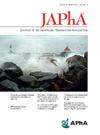Leading vaccine gap closure with community health workers: The CPESN Missouri health equity approach
IF 2.5
4区 医学
Q3 PHARMACOLOGY & PHARMACY
Journal of the American Pharmacists Association
Pub Date : 2025-06-02
DOI:10.1016/j.japh.2025.102429
引用次数: 0
Abstract
Backbround
The Missouri Pharmacy Association (MPA), Community Pharmacy Enhanced Services Network (CPESN) of Missouri, and CPESN Health Equity launched the Missouri Pharmacy Vaccine Gap Closure Program aimed to improve vaccine coverage by integrating community health workers (CHWs) into pharmacy settings. Preliminary findings indicate 6.6% gap closure rate, $700,000 in increased revenue, and $2.5 million in reduced costs.
Objective
To assess the feasibility and effectiveness of integrating CHW-trained pharmacy technicians into existing workflows for immunization services, evaluate staff perceptions and acceptance, and identify facilitators and barriers to implementation.
Methods
Pharmacy technicians trained as CHWs or Social Determinants of Health (SDOH) specialists worked with pharmacists to conduct immunization and SDOH screenings, tailored educational sessions, and patient follow-ups aligned with medication synchronization workflows. Data on vaccine eligibility, patient demographics, and health status were collected prospectively and surveys administered to staff assessed barriers and facilitators.
Results
Staff from pharmacies participating rated the program highly in value for both the pharmacy and patients, feeling comfortable addressing vaccine hesitancy. Integration with Med Sync workflows received moderate scores, while the Basecamp support portal was highly valued, along with positively rated but less utilized regional facilitators (RF). Key facilitators included cross-training, integration with Med Sync, and robust resources and training. Barriers included staff shortages, low patient engagement, and difficulties in stores lacking a dedicated workflow champion.
Conclusion
The Missouri Pharmacy Vaccine Gap Closure Program has demonstrated positive impact and initial success in the first 6 months, integrating well into pharmacy workflows and receiving strong support and value recognition from pharmacies' staff. Key success factors include the cross-training of technicians as CHW/SDoH specialists and robust technical support from MPA and CPESN. Growth opportunities include enhancing awareness of RFs' value among pharmacy sites and further analyzing medication synchronization workflow variations to establish best practices to optimize program implementation and delivery.
领先的疫苗缺口关闭与社区卫生工作者:CPESN密苏里州卫生公平方法。
背景:密苏里州药房协会(MPA)、密苏里州社区药房增强服务网络(CPESN)和CPESN健康公平发起了密苏里州药房疫苗缺口关闭计划,旨在通过将社区卫生工作者(chw)纳入药房环境来提高疫苗覆盖率。初步调查结果表明,差距缩小率为6.6%,收入增加70万美元,成本降低250万美元。目的:评估将卫生保健中心培训的药学技术人员纳入现有免疫服务工作流程的可行性和有效性,评估工作人员的看法和接受程度,并确定实施的促进因素和障碍。方法:培训为chw或健康社会决定因素(SDOH)专家的药学技术人员与药剂师一起进行免疫和SDOH筛查,定制教育课程,并根据药物同步工作流程对患者进行随访。前瞻性地收集了有关疫苗资格、患者人口统计和健康状况的数据,并对工作人员进行了调查,评估了障碍和促进因素。结果:参与项目的药房工作人员认为该项目对药房和患者都有很高的价值,对解决疫苗犹豫问题感到放心。与Med Sync工作流的集成得到了中等的分数,而Basecamp支持门户得到了很高的评价,同时得到了积极的评价,但使用较少的区域促进者(RF)。关键的促进因素包括交叉培训、与Med Sync的集成以及强大的资源和培训。障碍包括员工短缺,患者参与度低,以及缺乏专门的工作流程倡导者的商店的困难。结论:密苏里州药房疫苗缺口关闭计划在前六个月显示出积极的影响和初步的成功,很好地融入了药房的工作流程,并得到了药房员工的大力支持和价值认可。关键的成功因素包括技术人员作为CHW/SDoH专家的交叉培训以及MPA和CPESN的强大技术支持。增长机会包括提高药房对rf价值的认识,进一步分析药物同步工作流程的变化,以建立最佳实践,优化项目的实施和交付。
本文章由计算机程序翻译,如有差异,请以英文原文为准。
求助全文
约1分钟内获得全文
求助全文
来源期刊
CiteScore
3.30
自引率
14.30%
发文量
336
审稿时长
46 days
期刊介绍:
The Journal of the American Pharmacists Association is the official peer-reviewed journal of the American Pharmacists Association (APhA), providing information on pharmaceutical care, drug therapy, diseases and other health issues, trends in pharmacy practice and therapeutics, informed opinion, and original research. JAPhA publishes original research, reviews, experiences, and opinion articles that link science to contemporary pharmacy practice to improve patient care.

 求助内容:
求助内容: 应助结果提醒方式:
应助结果提醒方式:


